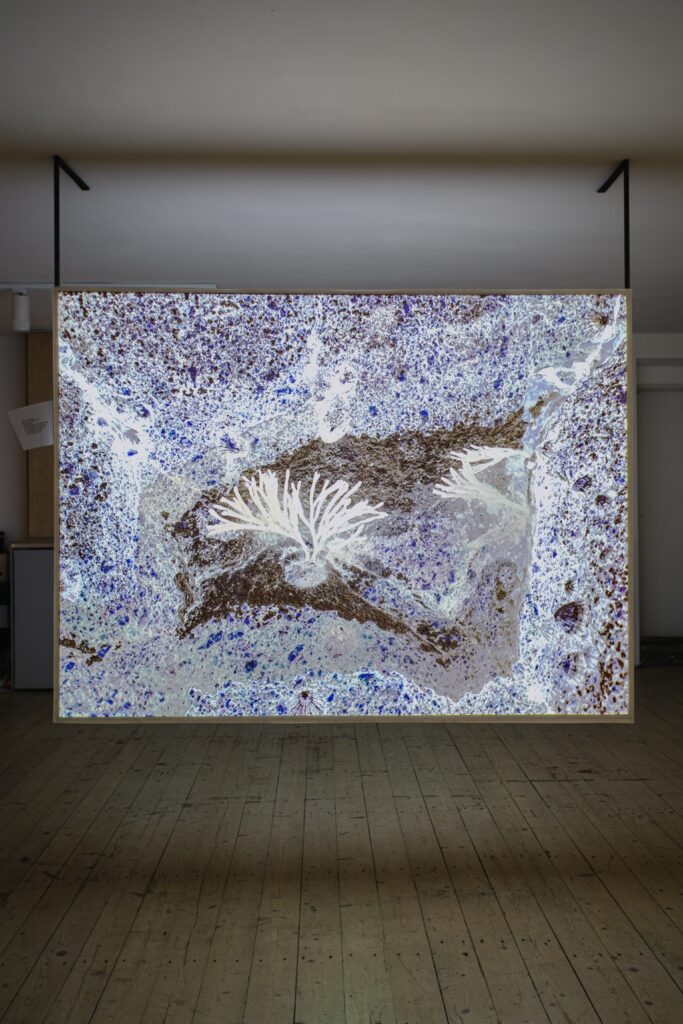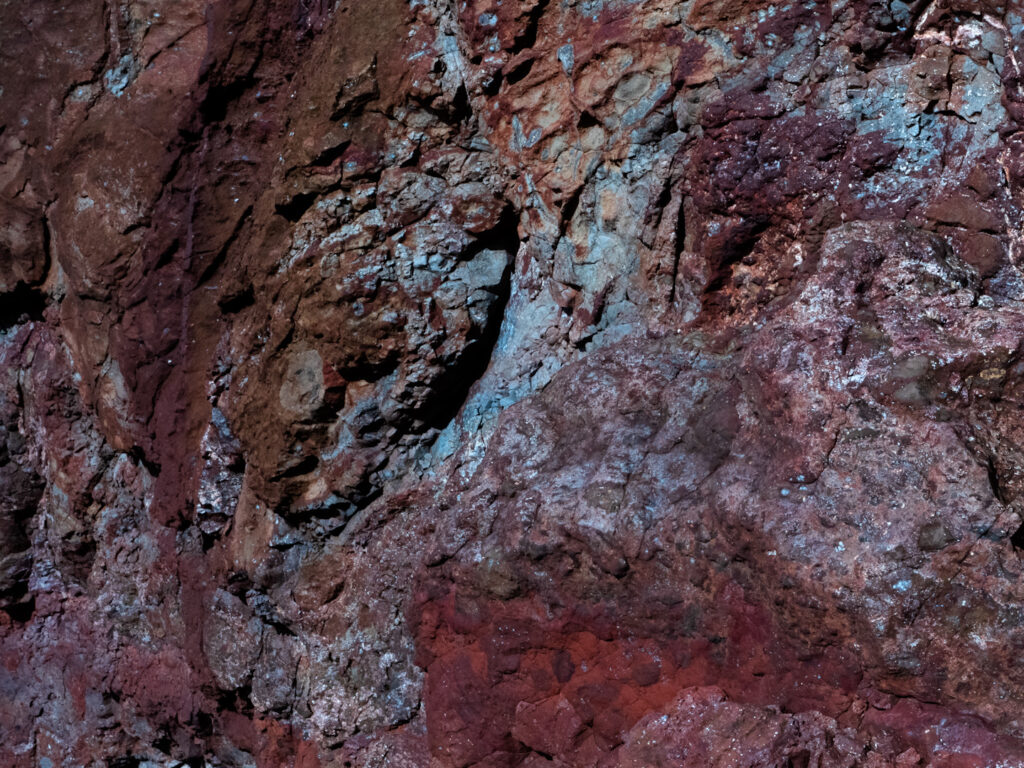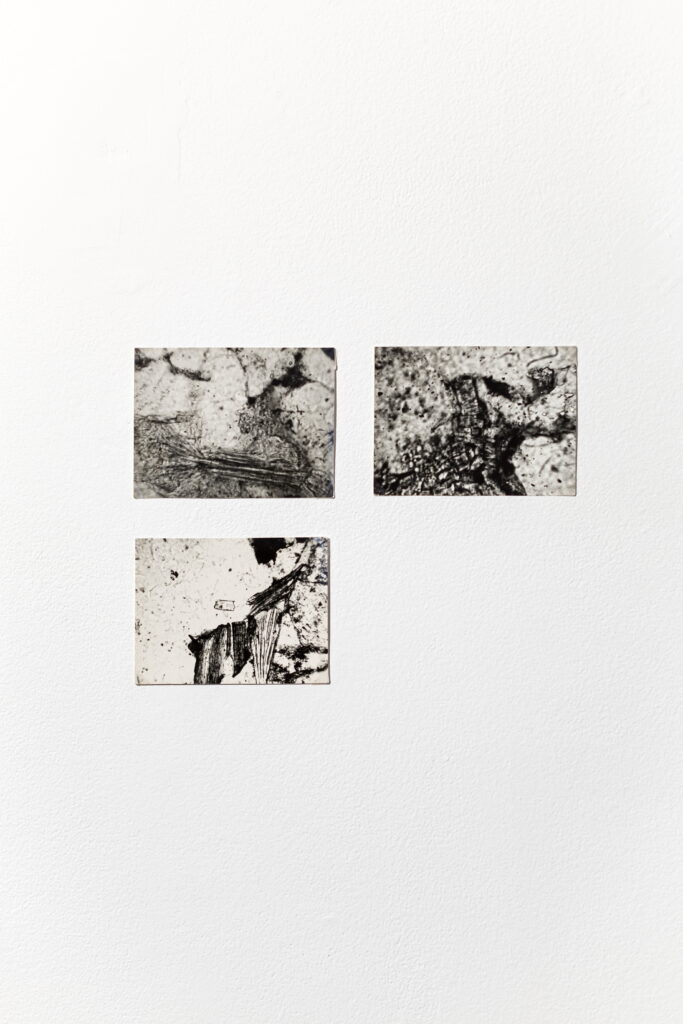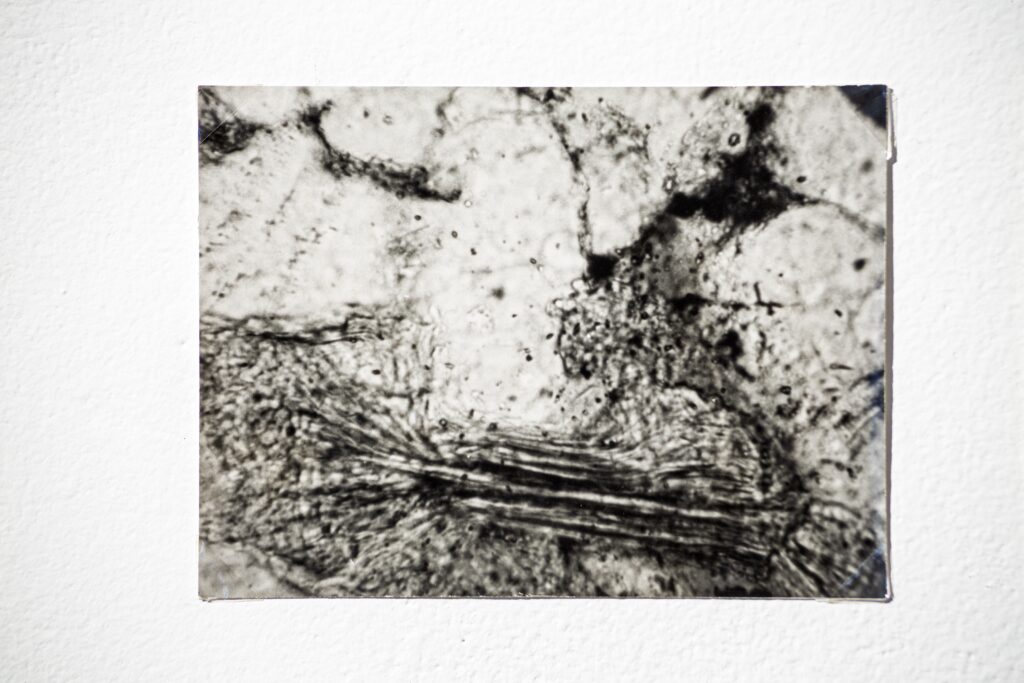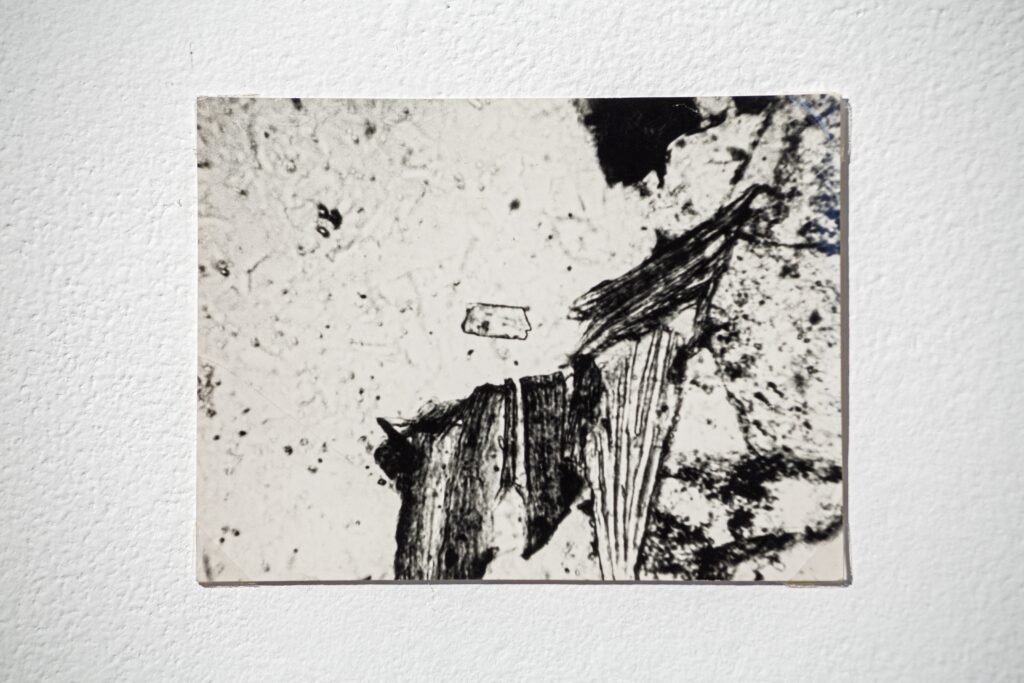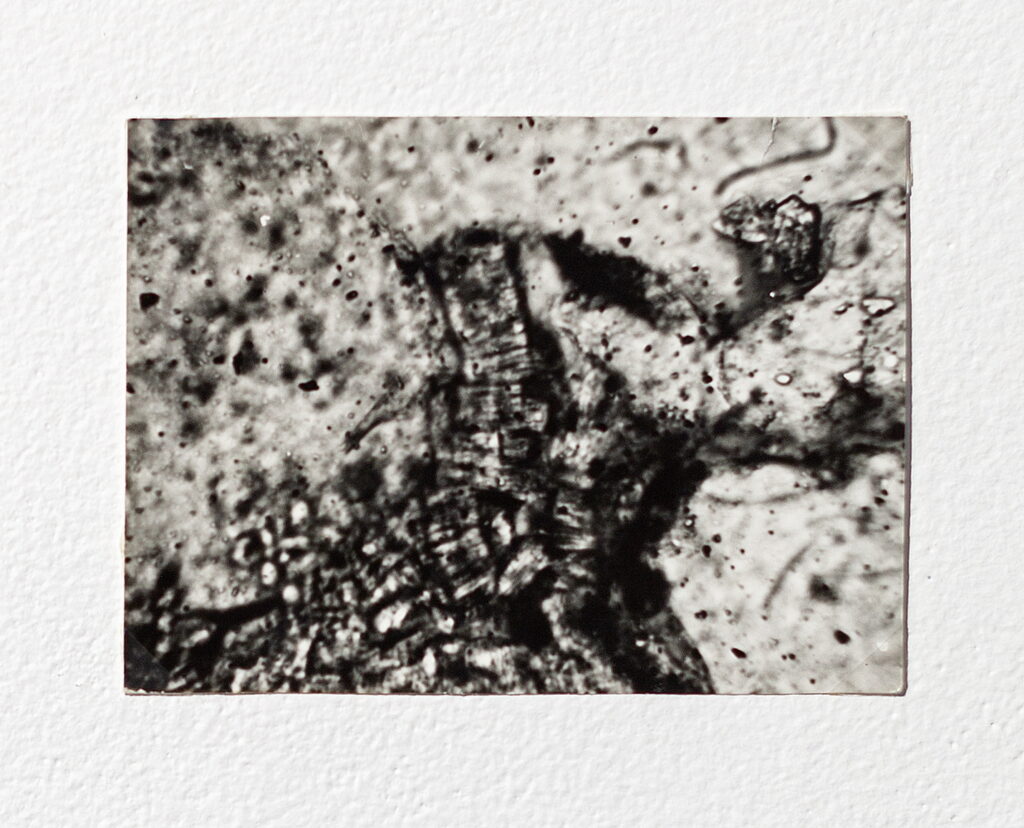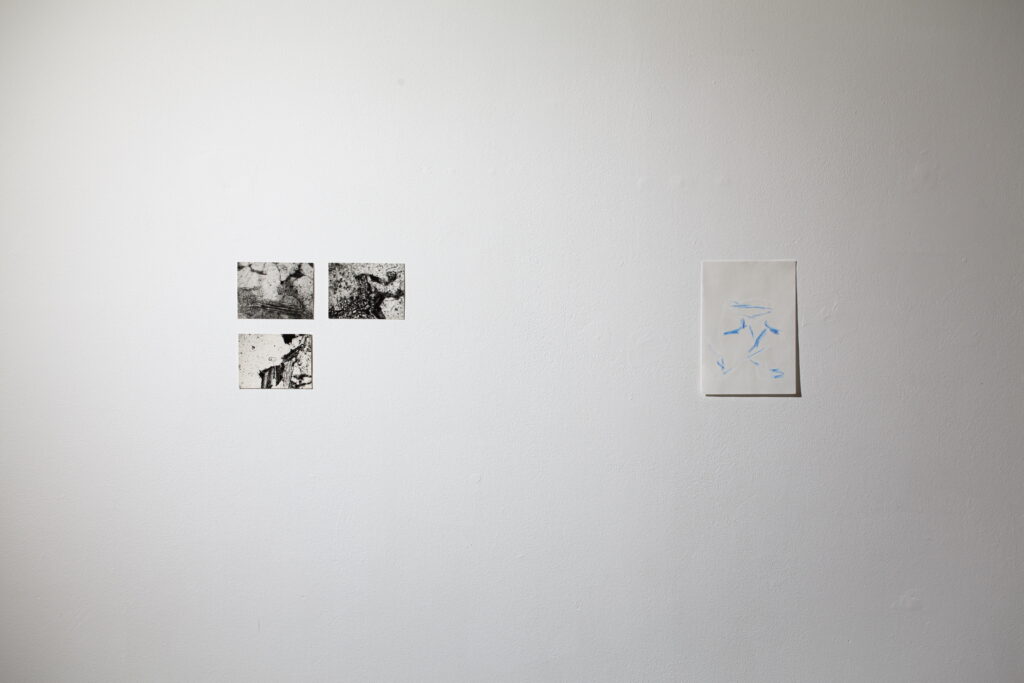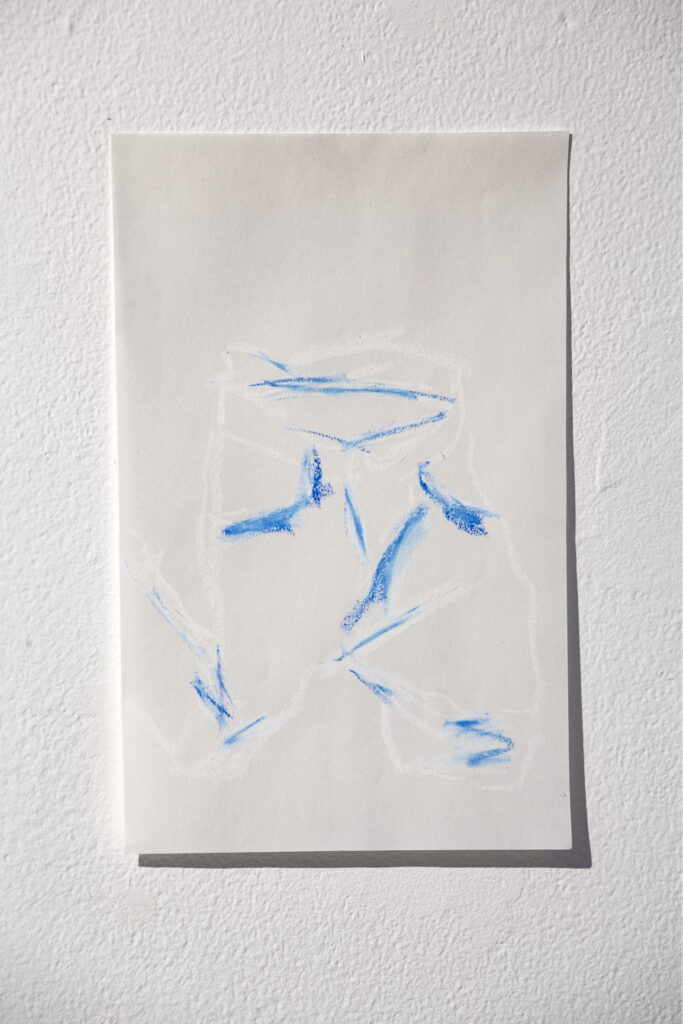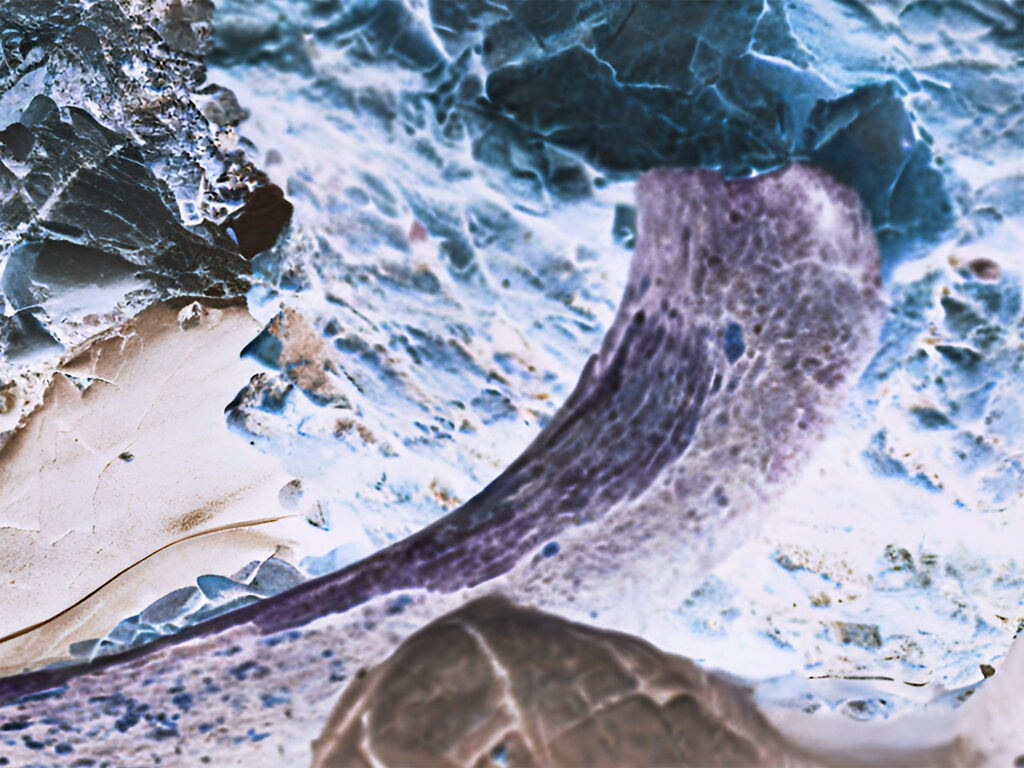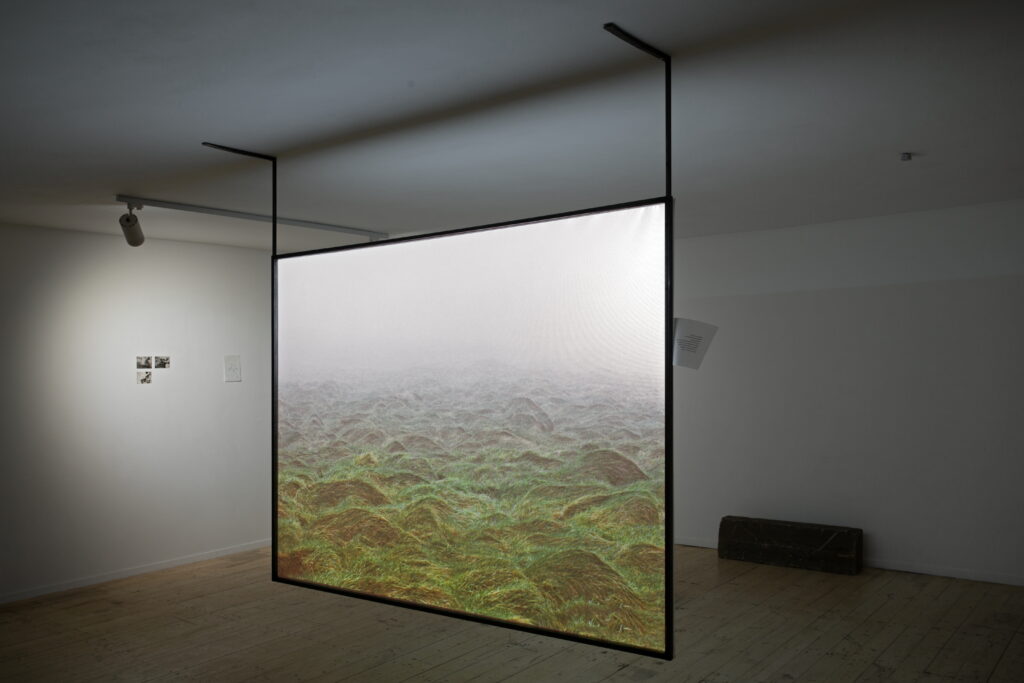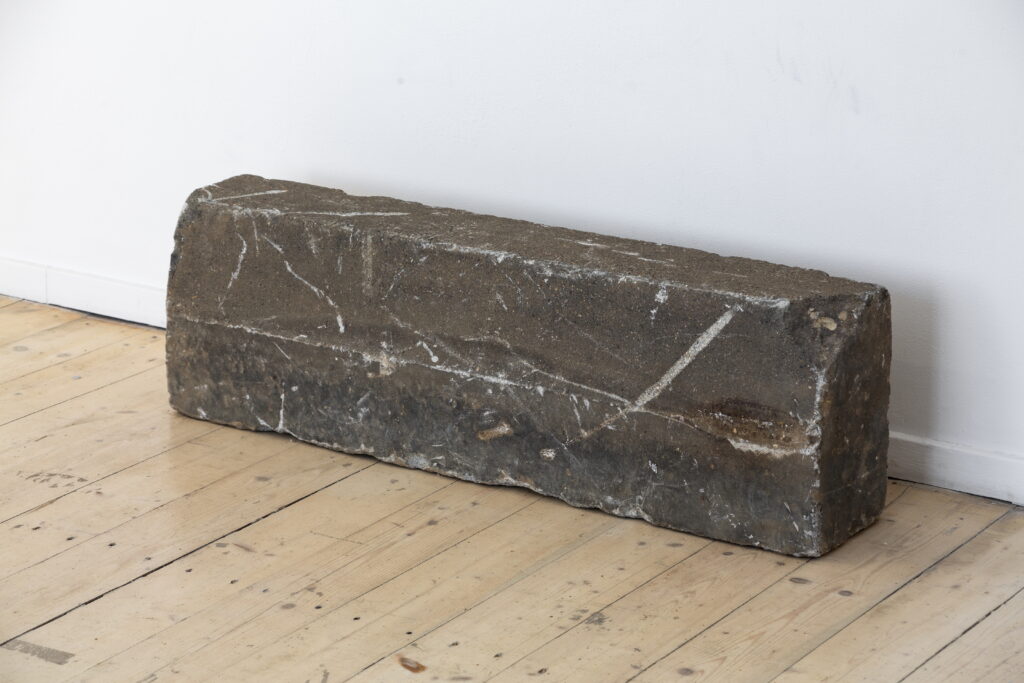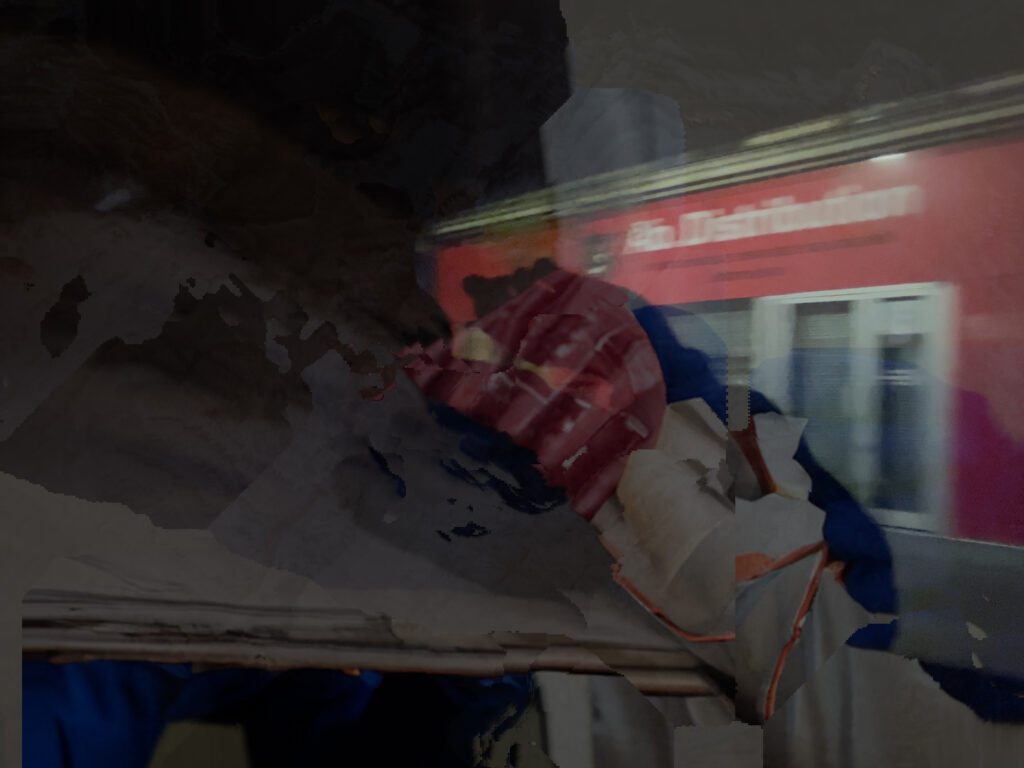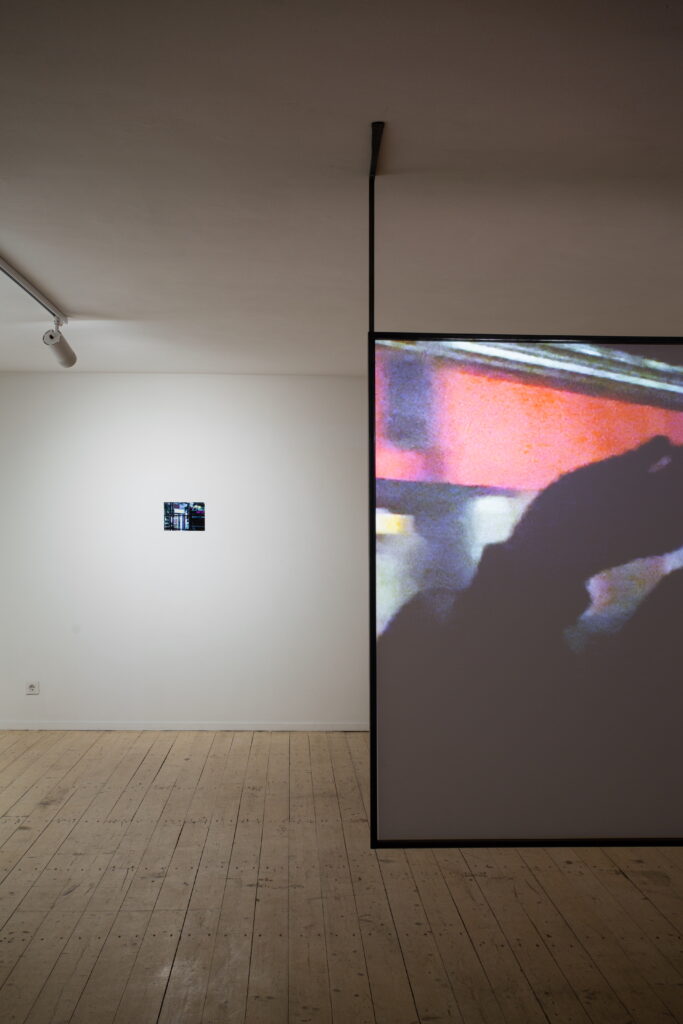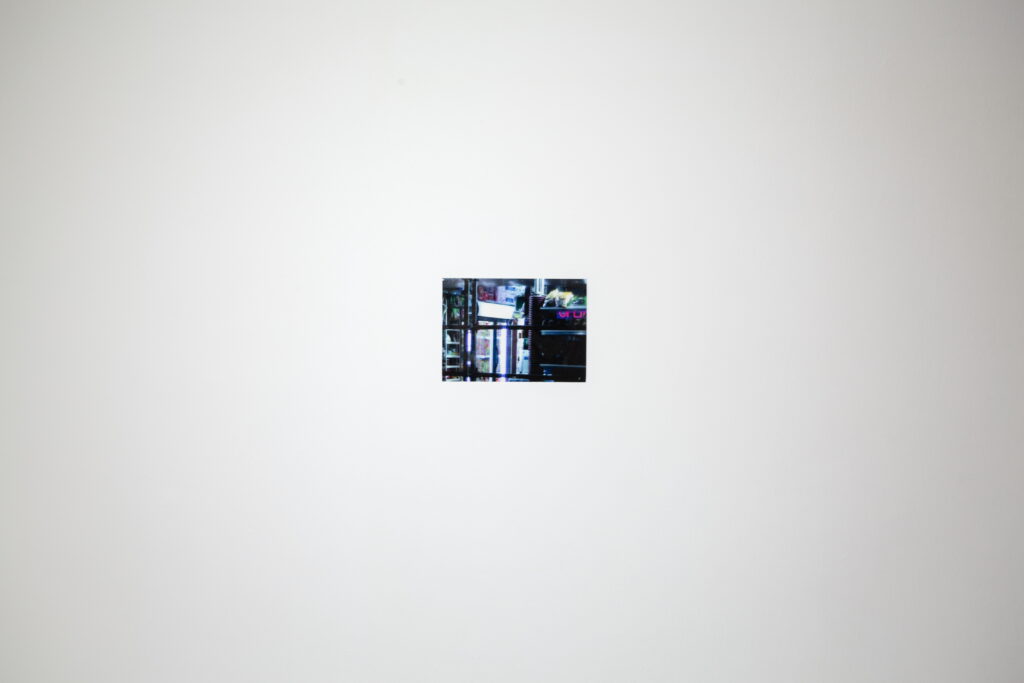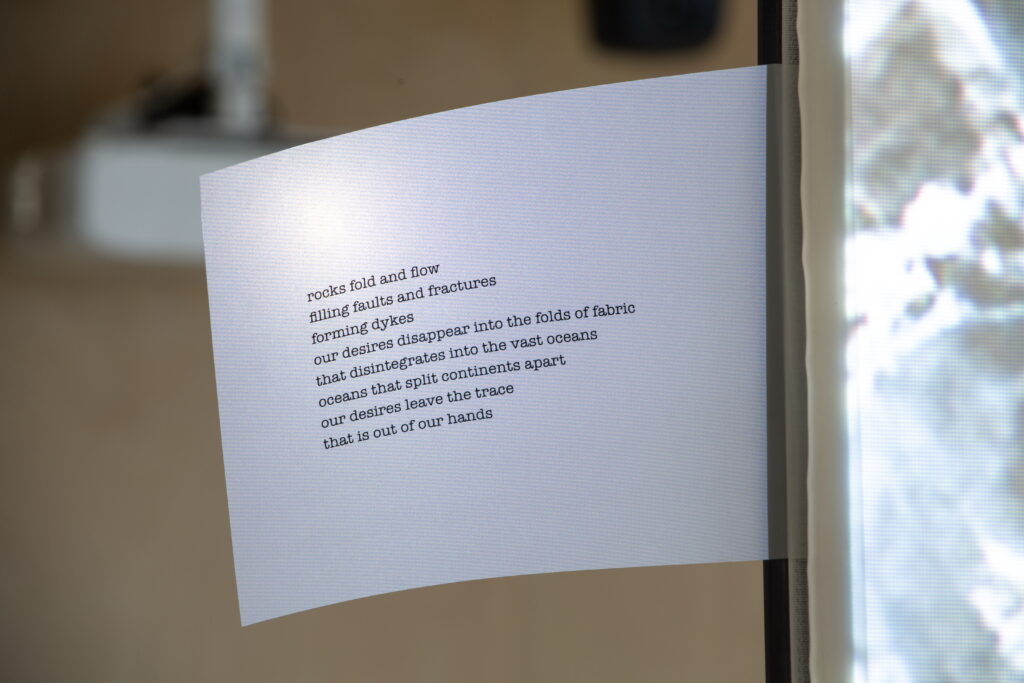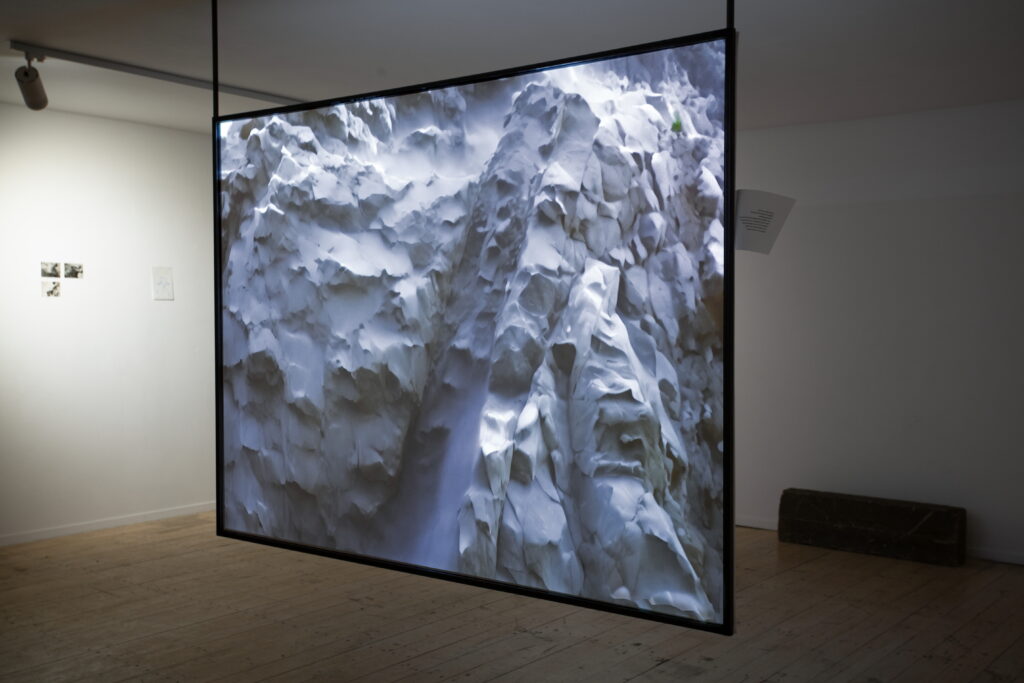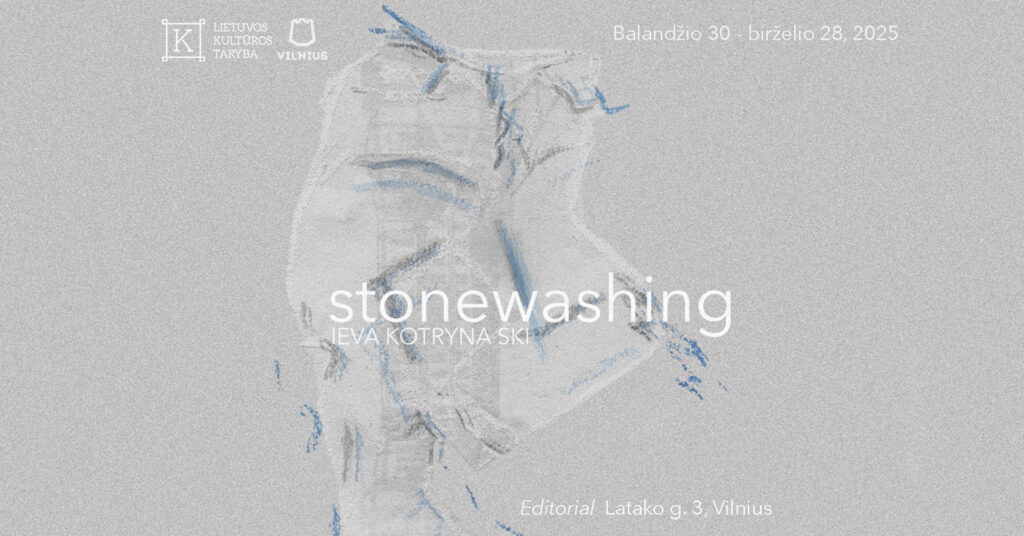On 30 April at 6pm, the exhibition stonewashing by Ieva Kotryna Ski will open at the Editorial space in Vilnius. Since her earliest works, the artist has been delving into geological processes and exploring the role of the digital image in shaping the human relationship with the environment. In her practice, geological terminology often becomes a starting point for exploring broader contexts – for instance, the word dyke, which in geology denotes the intrusion of one type of rock into another, while in queer vocabulary it refers to a lesbian person. Precisely this double meaning inspired the Dyke Into project, which sought to raise the visibility of queer people in public spaces in Vilnius. In her new exhibition at Editorial, the artist continues tracing the paths of the word dyke, this time focusing more closely on the geological process itself. Her works weave together geological formations with personal and collective desires, as well as the overlays between banal and intangible materials. Reflecting on the different surfaces of the screen, the image, matter, or the earth itself, Ieva Kotryna Ski explores the fragile relationship with reality – one that often seems to slip through our fingers. Whether high or low quality, filmed or generated, the image is constantly deceiving us – much like the rocks that appear to embody solidity.
“When I was travelling along the coast of Ireland in search of geological dykes, my camera fell into the water, leaving me with a crappy camcorder and an analogue photo camera for the rest of the trip. In the video Faults and Folds, most of the images are photographs altered through digital manipulation or animated using an AI video generator. The image becomes molten –it loses its “solid” documentary function and begins to flow, mutate, and fold. Rock formations and landscape are in constant transformation and flux.
The abstracted photographs on the wall offer a microscopic glimpse of the mica mineral – I unexpectedly discovered them in my grandfather’s archive shortly after returning from Ireland. While travelling there, I learned about the Mica Scandal – also known as the Irish Defective Block Crisis – where newly built houses began to crumble due to excessive use of mica in construction binders. “Mica is a virus!” read the signs on the roadsides. Mica is a naturally fragile mineral that easily split into thin, elastic sheets. However, in the right context, mica is extremely valuable – often used as an insulator due to its heat resistance, or in cosmetics for its shimmery effect.
Images of every nature scrape against each other like items in a pocket. Rocks become enfolded within the fabric of jeans. The exhibition title stonewashing borrows from the term describing a method used to accelerate the fading and softening of denim. Originally, volcanic pumice stones were used to abrade the fabric, giving it a worn-in look and feel by scraping against the material. This deliberately created look results in heightened resistance to scratches and signs of wear and tear“ – Ieva Kotryna Ski.
Ieva Kotryna Ski (b. 1994) is an artist currently based in Paris. She holds a BA in Film and an MA from École Universitaire de Recherche ArTeC (2022). Her artistic practice began with the aesthetics of phone video, exploring technological glitches and the documentation of fragmented everyday life. She recently presented her work in the group exhibition Les Ambassadeurs (2024) at Fondation Fiminco, France; the solo exhibition Faults and Folds (2024) at CCA Derry~Londonderry, Northern Ireland; and the in-situ installation Thing-finding (2024) in the Curonian Spit, Lithuania, upon the invitation of Nida Art Colony.
Her work has also been shown in group exhibitions at Ars Electronica, Linz, Upper Austria (2022), Cité des Arts, Paris (2022), and the Contemporary Art Centre (CAC), Vilnius (2021). In 2021, her video installation Sinkhole received the Audience Award at the exhibition JCDecaux Award: Spaces, organised by CAC Vilnius.
Exhibition Architect: Ona Juciūtė
Designer: Dalia Dūdėnaitė
Translator and Language Editor: Alexandra Bondarev
The exhibition will run until June 28.
Visitors are welcome to bring their pets – especially assistance dogs.
The artist would like to thank Ievai Kabašinskaitė, Vytautas Narbutas (geologist) and her entire family, Marianna Maruyama, Mark Cooper, CCA Derry~Londonderry, Marcia Sloane, and Viltė Bražiūnaitė.
The exhibition is financed by the Lithuanian Council for Culture and Vilnius City Municipality.
Editorial opening hours: Wed–Fri 3–7pm / Sat 12–4pm
Go back to the main page